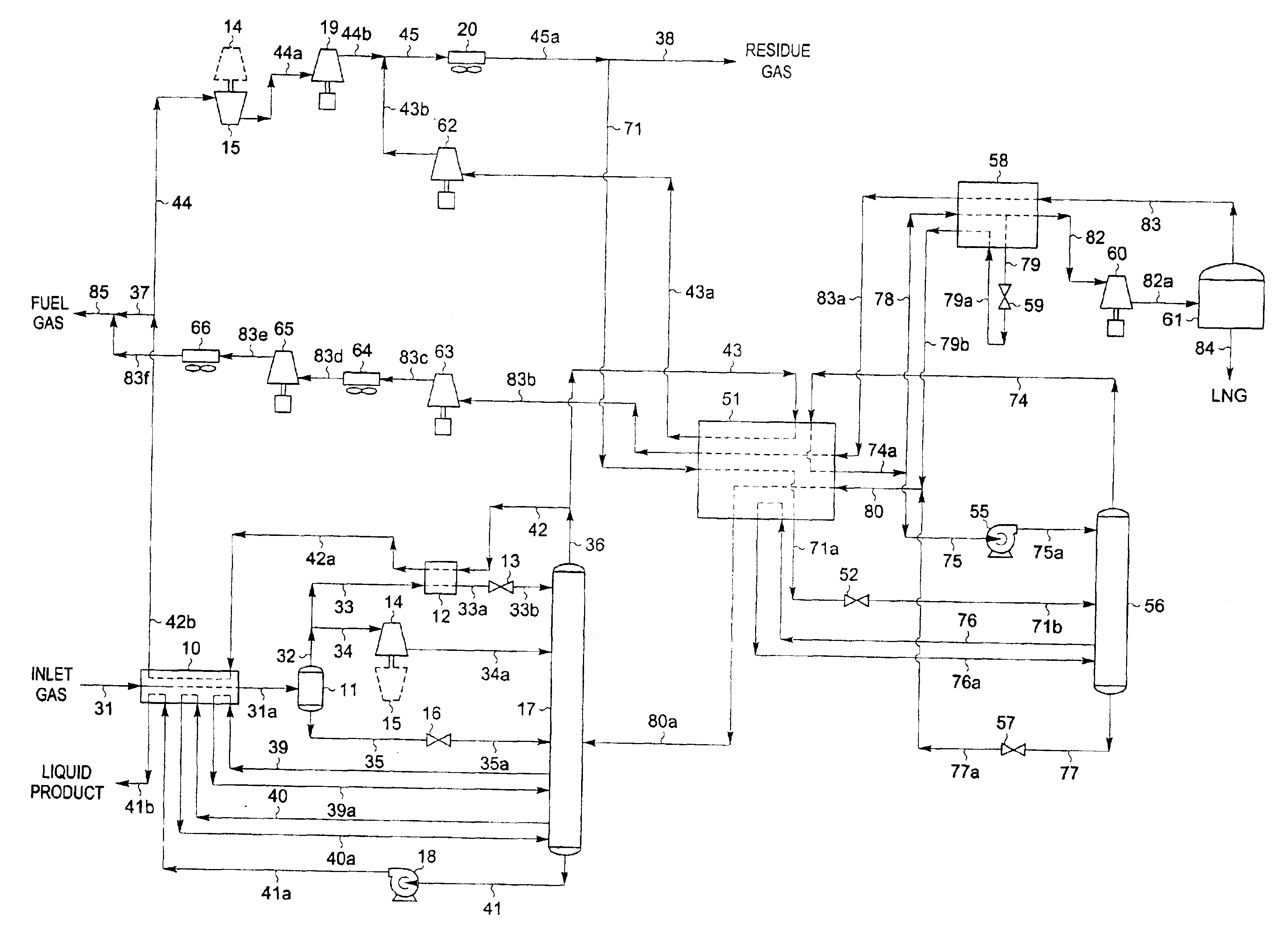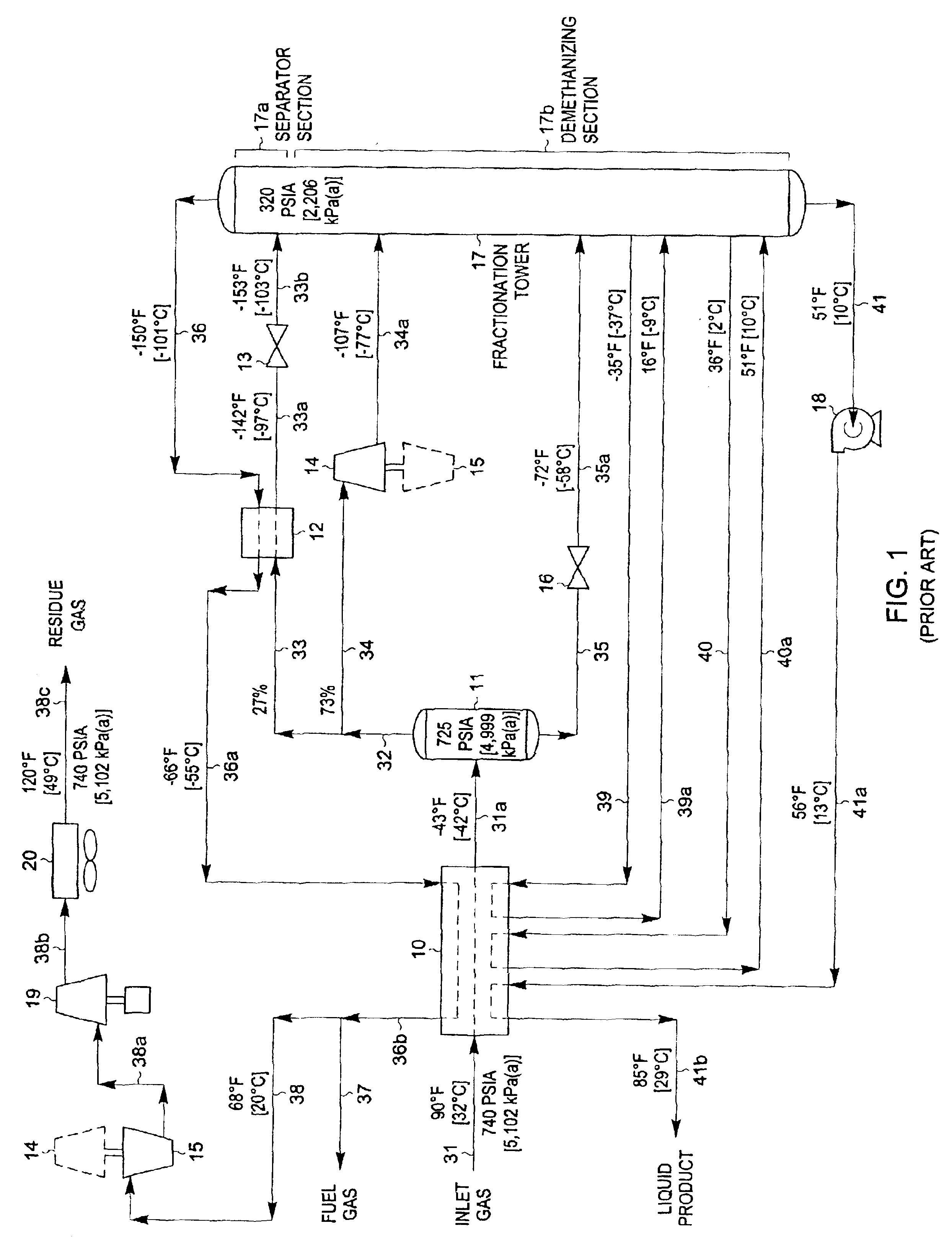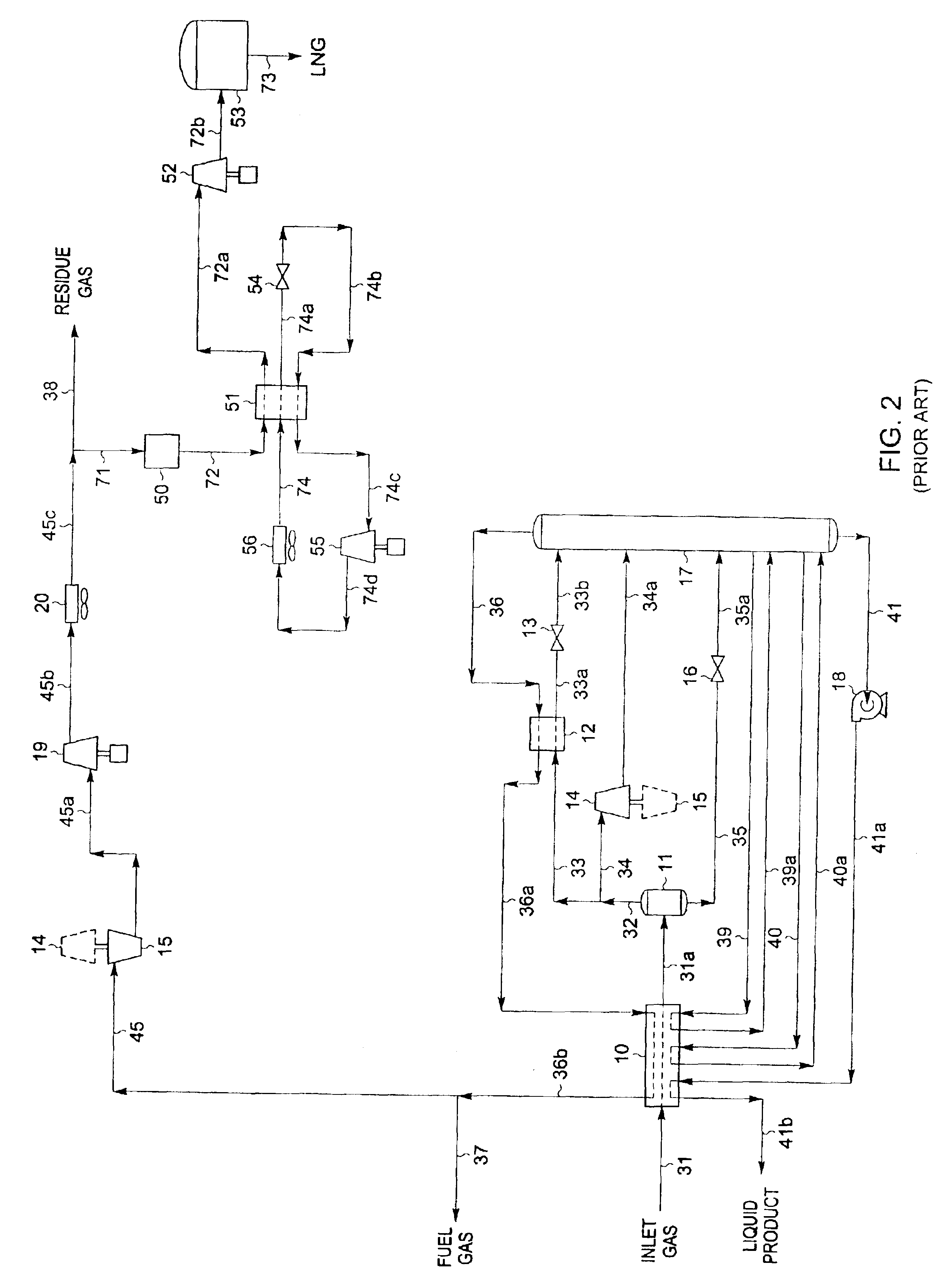LNG production in cryogenic natural gas processing plants
a technology of cryogenic natural gas and processing plants, which is applied in the direction of refrigeration and liquifaction, lighting and heating apparatus, solidification, etc., can solve the problems of reducing the purity (i.e., methane concentration) of the lng product, affecting the value of liquid products for the plant operator, and affecting the quality of the liquid produ
- Summary
- Abstract
- Description
- Claims
- Application Information
AI Technical Summary
Benefits of technology
Problems solved by technology
Method used
Image
Examples
Embodiment Construction
[0072]FIG. 5 illustrates a flow diagram of a process in accordance with the present invention. The inlet gas composition and conditions considered in the process presented in FIG. 5 are the same as those in FIGS. 1 through 4. Accordingly, the FIG. 5 process can be compared with that of the processes in FIGS. 2, 3, and 4 to illustrate the advantages of the present invention.
[0073]In the simulation of the FIG. 5 process, the inlet gas cooling, separation, and expansion scheme for the NGL recovery plant is essentially the same as that used in FIG. 1. The main differences are in the disposition of the cold demethanizer overhead vapor (stream 36) and the compressed and cooled third residue gas (stream 45a) produced by the NGL recovery plant. Inlet gas enters the plant at 90° F. [32° C.] and 740 psia [5,102 kPa(a)] as stream 31 and is cooled in heat exchanger 10 by heat exchange with cool demethanizer overhead vapor (stream 42a) at −66° F. [−55° C.], bottom liquid product at 53° F. [12° C...
PUM
 Login to View More
Login to View More Abstract
Description
Claims
Application Information
 Login to View More
Login to View More - R&D
- Intellectual Property
- Life Sciences
- Materials
- Tech Scout
- Unparalleled Data Quality
- Higher Quality Content
- 60% Fewer Hallucinations
Browse by: Latest US Patents, China's latest patents, Technical Efficacy Thesaurus, Application Domain, Technology Topic, Popular Technical Reports.
© 2025 PatSnap. All rights reserved.Legal|Privacy policy|Modern Slavery Act Transparency Statement|Sitemap|About US| Contact US: help@patsnap.com



